The 20th Century
Twentieth Century Masters
1899 to 1906 William Rogers Dawson [Ushers F V C Serjeant; W A Renwick; J L Lister].
81 applicants replied to the advertisement for the post of Head Master in 1898. The Governors selected six for interview and offered the post to William R. Dawson who had been on the teaching staff for a short time a year earlier. William Dawson was a Manxman who had graduated at Dublin University. He was undoubtedly the most dynamic Head Master to hold the post.
His first act was to appoint four younger, more active teachers, leading to the dismissal of the old staff. Within a year he had rented a building as a gymnasium. He appointed a Welsh Rugby Union International and Cambridge Blue, Charles B. Nichols, to the staff. He strengthened the cricket team by appointing a member of the Grantham Cricket Club as a professional during the summer. The numbers of pupils increased, as did the wealth of the foundation and with it the salary of the Head Master.
His salary was fixed at £150 p.a., as it had been for the last 20 years, but there was a capitation allowance of £2 per pupil for the first 50 pupils, £2 10s for the next 50 and £3 thereafter. Within two years there were 120 pupils and in two years 240. The Governors permitted William Dawson to rent houses in town for boarders in Gladstone Terrace, Welby Gardens, North Parade and two in Avenue Road.
In 1901 he started the Old Boys’ Society.
In 1904 equipped the Cadet Corps with a fife, bugle and drum band.
A Boarding House was built along Castlegate.
He persuaded the Governors to build on the site of the British School and the “Brook Street” block was opened by Sir Oliver Lodge in December 1904.
The entrance to the school changed again, from Castlegate to Brook Street.
In 1906 the Old School was converted to a Chapel. The school’s resources, both financial and accommodation, were stretched, despite the government grant as a school to teach Science, and the Inspectors warned “The Governing Body estimate they will just be able to meet their expenses but with the present fees and rate of grant . . . it is likely to be a matter of some difficulty.” And so it proved to be.
1917 to 1931 Alexander James Tate [Second Masters W.S.McVie; William Rowell]
The task of recovery from the war, as well as from the financial problems, was left to Alexander Tate and he proved himself well capable of coping. The regulations of 1907 had required that free places were to be made available for pupils from public elementary schools. The proportion set was “at least 25% of the previous years total entry”. This was the “Scholarship” so well remembered by older Old Granthamians and that was replaced by the “11+” after the Second World War.
Alexander Tate’s success can be measured by the increase in numbers to over 200 in his first year. Many of these were “scholarship boys” and their proportion grew until, roughly, half of the intake was selected by scholarship. The fear first voiced in 1904 that these boys would lower the standard in Grammar Schools was ill founded and the top classes became preponderantly scholarship boys. It was becoming clear, and was confirmed by later developments, that Alexander Tate was an exceptionally able Head Master. He had William Dawson’s organisational ability without the flamboyance and was as able to attract more pupils into the school but on a sounder basis than William Dawson.
In 1919 Sedgebrook School closed and many pupils and some teachers moved to this school, including George Wooler Preston who had been sacked in 1899. The school population grew again with a total exceeding 300.
The Governors looked again at the Vicarage Garden with an idea of building but the Church Commissioners would have none of it. The solution came with the purchase of a World War I army hut that was large enough to provide five classrooms and several smaller rooms. It was a “ten year” stopgap, which stayed for 48 years.
In addition the Old School was divided into three classrooms by curtains. Finances were again tight. Inflation was leading to the late 1920s Stock Market Crash and school teachers’ salaries were cut by 5%. Alexander Tate took a £100 cut in salary for three years to ease the burden on the foundation. The school, however, flourished.
The O.T.C. and its band held parades on Armistice Day and regularly on Church Parades. The rugby teams played many of the schools that were still opponents in the 21st century. In 1924 Founders’ Day was inaugurated. The bicentenary of Newton’s death was commemorated in 1927 and a year later there were celebrations of the School’s Quatercentenary. In February of 1931 the school and the town were shocked and dismayed to hear the announcement that Alexander Tate had died suddenly.
Post 1931 Head Masters and deputy Head Masters
| Head Masters | Deputy Head Masters | ||
|---|---|---|---|
| 1931 to 1939 | Charles Bispham | 1932 to 1948 | William Rowell |
| 1939 to 1958 | William J Huggins | 1948 to 1961 | Harry F Marks |
| 1959 to 1972 | Gerald A Goodban | 1962 to 1978 except 1972 | Stanley S M Nussey |
| 1972 | Stanley S M Nussey | 1978 to 2000 except 1982 | Gerald C Dyer |
| 1972 to 1981 | Ray G W Fardon | 1982 to | John Stenson |
| 1981 to 1982 | Gerald C Dyer | 1988 to 2010 | Alan Farmilo |
| 1982 to 1995 | Derek Lee | 2001 to 2003 | Mike Reading |
| 1995 to 2010 | Stephen Howarth | 2004 to 2012 | Janet Phelan |
| 2010 to 2012 | Charles Dormer | 2013 to 2025 | Stephen Brook |
| 2012 to 2018 | Frank Hedley | 2013 to | Justin Dixon |
| 2018 to | Simon M Pickett | ||







